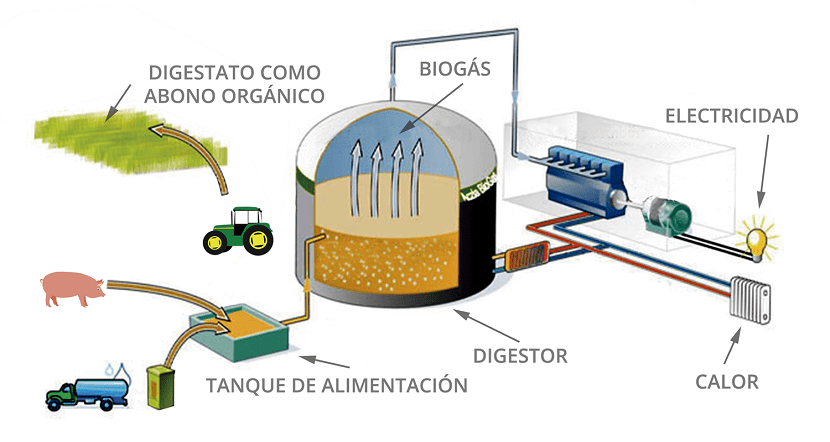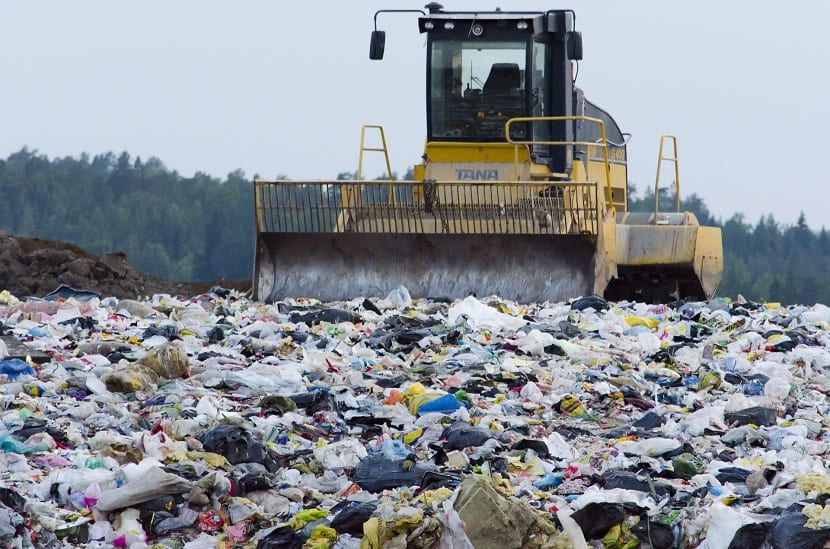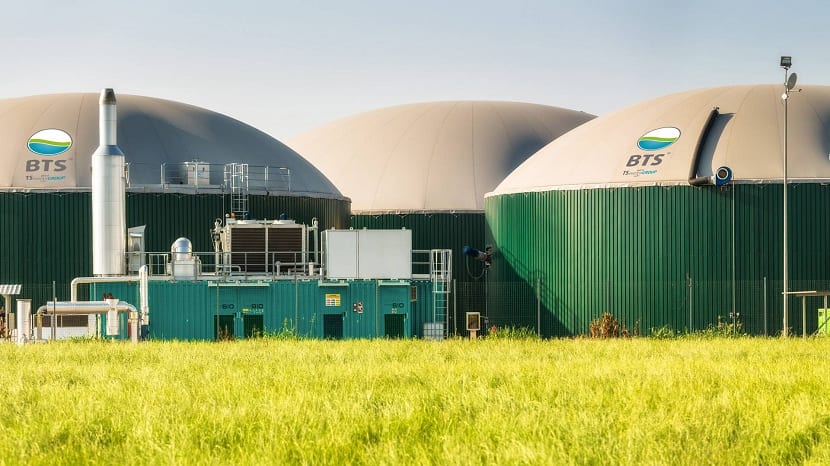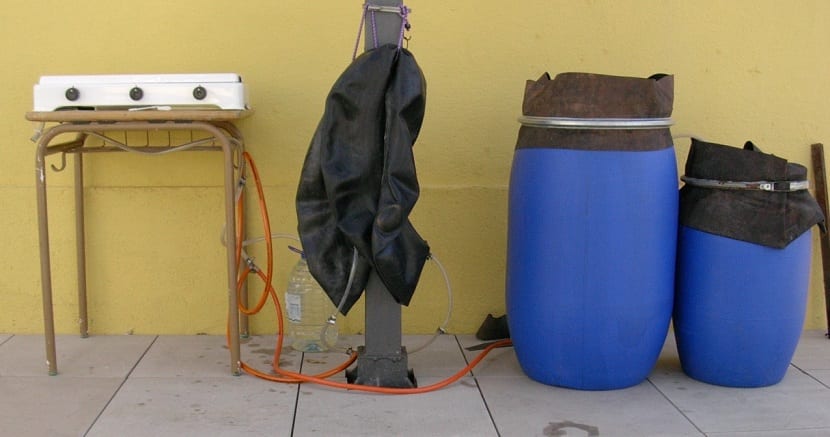
There are numerous renewable energy sources apart from what we know as wind, solar, geothermal, hydraulic, etc. Today we are going to analyze and learn about a renewable energy source, perhaps not as well known as the rest, but of great power. It's about biogas.
Biogas is a powerful gas extracted from organic waste. In addition to its many benefits, it is a form of clean and renewable energy. Do you want to know more about biogas?
Biogas characteristics
Biogas is a gas that is generated in natural environments or in specific devices. It is the product of biodegradation reactions of organic matter. They are commonly produced in landfills as all deposited organic matter degrades. When said organic matter is exposed to external agents, the action of microorganisms such as methanogenic bacteria (bacteria that appear when there is no oxygen and feed on methane gas) and other factors degrade it.
In these environments where oxygen does not exist and these bacteria eat organic matter, their waste product is methane gas and CO2. Therefore, the composition of the biogas it is a mixture made up of 40% and 70% methane and the rest of CO2. It also has other small proportions of gases such as hydrogen (H2), nitrogen (N2), oxygen (O2) and hydrogen sulfide (H2S), but they are not fundamental.
How biogas is produced

Biogas is produced by anaerobic decomposition and is very useful for treating biodegradable waste, since it produces a high-value fuel and generates an effluent that can be applied as a soil conditioner or generic compost.
With this gas electrical power can be generated in various ways. The first is to use turbines to move gas and generate electricity. Another is to use gas to generate heat in ovens, stoves, dryers, boilers or other combustion systems that require gas.
As it is generated as a result of decomposing organic matter, it is considered a type of renewable energy that is capable of replacing fossil fuels. With it you can also obtain energy for cooking and heating just as natural gas works. Similarly, biogas is connected to a generator and creates electricity through internal combustion engines.
Energy potential

Biogas extraction in landfills
So that it can be said that biogas has such potential as to replace fossil fuels is because it really has to have great energy power. With a cubic meter of biogas it can generate up to 6 hours of light. The light generated can reach up to the same as a 60 watt bulb. You can also run a cubic meter refrigerator for one hour, an incubator for 30 minutes, and a HP motor for 2 hours.
Therefore, biogas is considered a powerful gas with incredible energy capacity.
Biogas history
The first mentions that can be seen of this gas date back to the year 1600, when several scientists identified this gas as the one that comes from the decomposition of organic matter.
Over the years, in 1890, it was built the first biodigester where biogas is produced and it was in India. In 1896 street lamps in Exeter, England, were powered by gas collected from digesters that fermented the sludge from the city's sewers.
When the two world wars ended, the so-called biogas-producing factories began to spread in Europe. In these factories biogas was created to be used in the automobiles of the time. Imhoff tanks are known as those capable of treating sewage waters and fermenting organic matter to produce biogas. The gas that was generated was used for the operation of the plants, for municipal vehicles and in some cities it was injected into the gas network.
Biogas diffusion was hampered by the easy access and performance of fossil fuels and, after the energy crisis of the 70s, biogas research and development was started again in all the countries of the world, being more focused on Latin American countries.
During the last 20 years, the development of biogas has had many important advances thanks to the discoveries about the microbiological and biochemical process that acts in it and thanks to the investigation of the behavior of the microorganisms that intervene in anaerobic conditions.
What are biodigesters?

Biodigesters are types of closed, hermetic and waterproof containers where organic matter is placed and allowed to decompose and generate biogas. The biodigester must be closed and hermetic so that anaerobic bacteria can act and degrade organic matter. Methanogenic bacteria only grow in environments where there is no oxygen.
These reactors have dimensions of more than 1.000 cubic meters of capacity and they work in conditions of mesophilic temperatures (between 20 and 40 degrees) and thermophilic (more than 40 degrees).
Biogas is also extracted from landfills where, as layers of organic matter are filled and closed, oxygen-free environments are created in which methanogenic bacteria are degrading organic matter and generating biogas that is extracted through conductive tubes.
The advantages that biodigesters have over other power generation facilities is that they have a low environmental impact and do not require highly qualified personnel. In addition, as a by-product of the decomposition of organic matter, organic fertilizers can be obtained that are reused to fertilize crops in agriculture.
Germany, China and India are some of the pioneer countries in introducing this type of technology. In Latin America, Brazil, Argentina, Uruguay and Bolivia have shown significant progress in their inclusion.
Biogas application today

In Latin America, biogas is used to treat stillage in Argentina. Stillage is the residue that is produced in the industrialization of sugar cane and under anaerobic conditions it is degraded and generates biogas.
The number of biodigesters in the world is not yet too determining. In Europe there are only 130 biodigesters. However, this works like the field of other renewable energies such as solar and wind, that is, as technology is discovered and developed, production costs decrease and the reliability of biogas generation improves. Therefore, it is believed that they will have a wide field of development in the future.
The application of biogas in rural areas has been very important. The first has served to generate energy and organic fertilizers for farmers in the most marginal areas who have less income and difficult access to conventional sources of energy.
For rural areas, technology has been developed that seeks to achieve digesters with a minimum cost and with easy maintenance to operate. The energy that needs to be produced is not as much as in urban areas, therefore it is not so conditional that its efficiency is high.
Another area for which biogas is used today It is in the agricultural and agro-industrial sector. The objective of biogas in these sectors is to provide energy and solve the serious problems caused by pollution. With biodigesters the contamination of organic matter can be better controlled. These biodigesters do have more efficiency and their application, in addition to having high initial costs, have more complex maintenance and operation systems.
Recent advances in cogeneration equipment have allowed a more efficient use of the gas generated and the continuous advances in fermentation techniques ensure a sustained development in this field.
When this type of technology is incorporated, it is mandatory that the products that are discharged into the sewer network of the cities are exclusively organic. Otherwise, the operation of the digesters may be affected and biogas production difficult. This has happened in several countries and biodigesters have been abandoned.
A very widespread practice throughout the world is that of the sanitary landfill. The goal of this practice is that of eliminating the large amounts of waste generated in large cities and with this, with modern techniques, it is possible to extract and purify the methane gas that is generated and that decades ago this generated serious problems. Problems such as the death of the vegetation that was in areas near the hospitals, bad smells and possible explosions.
The advancement of biogas extraction techniques has allowed many cities in the world, such as Santiago de Chile, to use biogas as a power source in the natural gas distribution network in urban centers.
Biogas has great expectations for the future, since it is a renewable, clean energy that helps to alleviate pollution and waste treatment problems. In addition, it contributes positively to agriculture, giving as a by-product organic fertilizers that help in the life cycle of the products and the fertility of the crops.

Good,
I am researching to make a biodigester.
Working in a pig farm with 8000 heads, I need a company that has experience in the construction of biodigesters.
This is in the region of the south.
Graciously
G. Bussi